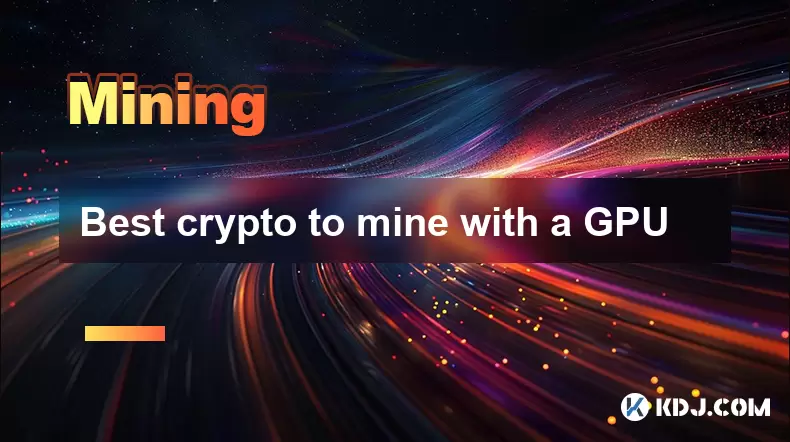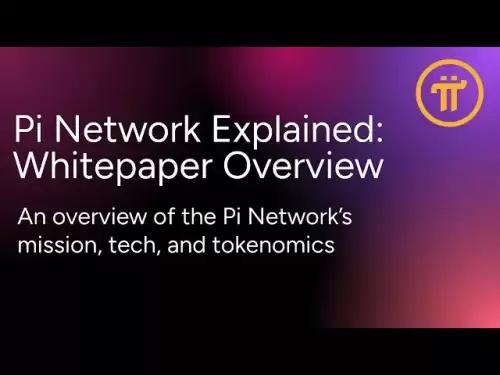-
 Bitcoin
Bitcoin $121,713.8152
3.06% -
 Ethereum
Ethereum $3,041.6437
2.42% -
 XRP
XRP $2.9499
5.12% -
 Tether USDt
Tether USDt $1.0000
-0.02% -
 BNB
BNB $704.1034
1.75% -
 Solana
Solana $166.7523
2.91% -
 USDC
USDC $0.9999
0.00% -
 Dogecoin
Dogecoin $0.2052
2.90% -
 TRON
TRON $0.3011
-0.47% -
 Cardano
Cardano $0.7461
1.42% -
 Hyperliquid
Hyperliquid $48.3650
1.12% -
 Stellar
Stellar $0.4548
3.52% -
 Sui
Sui $3.9527
14.50% -
 Chainlink
Chainlink $16.3300
5.87% -
 Bitcoin Cash
Bitcoin Cash $511.8016
1.25% -
 Hedera
Hedera $0.2395
1.40% -
 Avalanche
Avalanche $21.6526
2.06% -
 UNUS SED LEO
UNUS SED LEO $9.0073
-0.23% -
 Shiba Inu
Shiba Inu $0.0...01369
2.61% -
 Toncoin
Toncoin $3.0335
0.66% -
 Litecoin
Litecoin $96.6206
1.72% -
 Monero
Monero $355.1673
5.35% -
 Polkadot
Polkadot $4.0839
2.47% -
 Uniswap
Uniswap $9.3282
9.72% -
 Dai
Dai $0.9997
-0.01% -
 Ethena USDe
Ethena USDe $1.0004
-0.04% -
 Pepe
Pepe $0.0...01248
1.07% -
 Bitget Token
Bitget Token $4.4642
2.68% -
 Aave
Aave $325.0626
6.81% -
 Bittensor
Bittensor $418.1482
6.22%
Best crypto to mine with a GPU
GPU mining offers flexibility and lower entry costs compared to ASICs, making it ideal for individuals mining cryptocurrencies like Ethereum Classic, Ravencoin, and Monero using accessible hardware.
Jul 13, 2025 at 07:07 pm

Understanding GPU Mining and Its Relevance
GPU mining refers to the process of using graphics processing units (GPUs) to validate transactions on a blockchain network and earn cryptocurrency rewards. Unlike ASIC mining, which is hardware-specific and often expensive, GPU mining offers flexibility, accessibility, and relatively lower entry barriers. This makes it a popular choice among individual miners and small-scale operations.
Cryptocurrencies that support GPU mining typically use Proof-of-Work (PoW) consensus algorithms. These networks are designed to be resistant to ASICs, ensuring a more decentralized mining ecosystem. The choice of cryptocurrency to mine heavily depends on factors like hashrate performance, power consumption, difficulty level, and profitability.
Evaluating Profitability: Key Metrics to Consider
Before choosing the best crypto for GPU mining, several metrics should be evaluated:
- Hashrate: This indicates how quickly your GPU can solve cryptographic puzzles. A higher hashrate generally means better mining performance.
- Power Consumption: Mining consumes significant electricity. Calculating the watts per hash helps determine cost efficiency.
- Difficulty Level: As more miners join a network, the difficulty increases, affecting reward frequency.
- Market Price: The value of the mined coin directly affects earnings.
- Mining Software Compatibility: Not all cryptocurrencies support all mining software. Ensure compatibility with tools like NiceHash, Claymore, or PhoenixMiner.
These metrics should be analyzed together to determine which crypto offers the best ROI (return on investment) when mining with a GPU.
Top Cryptocurrencies Suitable for GPU Mining
Several cryptocurrencies remain viable options for GPU-based mining due to their ASIC-resistant algorithms and ongoing community support:
- Ethereum (ETH): Ethereum uses the ProgPoW/Keccak algorithm, which is highly compatible with GPUs. However, Ethereum transitioned to Proof-of-Stake in late 2022, making ETH mining no longer possible via PoW. Miners have shifted to alternatives.
- Ethereum Classic (ETC): Still using the Etchash algorithm, ETC is one of the most profitable options for GPU miners. It shares similarities with Ethereum’s pre-merge structure.
- Ravencoin (RVN): Utilizes the KawPow algorithm, which favors GPUs and discourages ASIC dominance. Ravencoin focuses on asset transfers and NFTs.
- Monero (XMR): Uses the CryptoNight algorithm, which is CPU-friendly but still viable for GPUs. Monero emphasizes privacy and anonymity.
- Zcash (ZEC): Implements the Equihash algorithm, which is memory-intensive and well-suited for GPU mining.
Each of these coins requires specific mining software and configurations, which will be detailed in the following sections.
Step-by-Step Setup for Mining Ethereum Classic (ETC)
Ethereum Classic remains one of the most profitable options for GPU mining. Here's how to set it up:
- Choose Mining Software: Use Claymore’s Dual Miner or PhoenixMiner, both of which support Etchash.
- Download and Extract: Download the latest version from official sources. Extract the files into a dedicated folder.
- Configure the Batch File: Open the .bat file and input your wallet address and pool name. Example command:
phoenixminer.exe -pool etc.f2pool.com:6666 -wal YOUR_WALLET_ADDRESS
- Run the Miner: Double-click the batch file to start mining. Monitor the console output to ensure stable connection and acceptable hashrate.
- Monitor Performance: Use tools like MSI Afterburner to track temperature, fan speed, and power draw.
This setup ensures efficient mining while keeping hardware within safe thermal limits.
Mining Ravencoin (RVN): KawPow Algorithm Configuration
Ravencoin utilizes the KawPow algorithm, optimized for GPU mining. Follow these steps to get started:
- Download KawPow Miner: Choose between TeamRedMiner or SRBMiner.
- Create a Wallet Address: Use the official Ravencoin wallet or a third-party service like Trust Wallet.
- Edit the Configuration File: Locate the .bat file and insert your wallet address and mining pool. Example command:
TeamRedMiner.exe --algorithm kawpow --pool rvn.pool.minexmr.com:443 --wallet YOUR_WALLET_ADDRESS
- Launch the Miner: Run the miner and observe the reported hashrate. Adjust intensity settings if needed for stability.
- Join a Mining Pool: Pools like minexmr.com or ravenminer.com offer reliable payouts and low fees.
Ensure your system BIOS and GPU drivers are updated for optimal performance and compatibility.
Frequently Asked Questions
Q1: Can I mine multiple cryptocurrencies simultaneously with the same GPU?
Yes, some mining software supports dual mining, where two different algorithms run on the same GPU. For example, Ethereum + Decred or Ethereum + Siacoin. However, this may increase power consumption and heat generation.
Q2: How do I choose the right mining pool?
Look for pools with low fees, regular payouts, good uptime, and server locations close to you. Popular options include F2Pool, Nanopool, and Hiveon for various cryptocurrencies.
Q3: What impact does overclocking have on GPU mining performance?
Overclocking can boost hashrate but also increases power consumption and heat. Use tools like MSI Afterburner to find a balance between performance and stability without damaging your hardware.
Q4: Is cloud mining a better alternative to GPU mining?
Cloud mining removes the need for hardware management but often comes with high fees, contract risks, and limited control. For full transparency and ownership, local GPU mining remains preferable.
Disclaimer:info@kdj.com
The information provided is not trading advice. kdj.com does not assume any responsibility for any investments made based on the information provided in this article. Cryptocurrencies are highly volatile and it is highly recommended that you invest with caution after thorough research!
If you believe that the content used on this website infringes your copyright, please contact us immediately (info@kdj.com) and we will delete it promptly.
- XRP's Wild Ride: Implied Volatility and Potential Price Swings
- 2025-07-15 01:10:12
- Zebec Network: Decoding the Buzz Around ZBCN and Crypto Payments
- 2025-07-15 00:30:12
- LUNC Price Bullish Breakout Confirmed: Analyst Predicts 555% Surge!
- 2025-07-15 00:30:12
- Trump, Bitcoin, and Reserves: A New Era for Crypto?
- 2025-07-14 22:50:11
- Bitcoin's Wild Ride: All-Time Highs and Crypto Week Mania!
- 2025-07-14 23:10:12
- Bitcoin's Wild Ride: Coin Surge and Fintech Experts Weigh In
- 2025-07-14 23:10:12
Related knowledge

How are crypto mining profits taxed?
Jul 14,2025 at 12:28am
Understanding Cryptocurrency Mining and TaxationCryptocurrency mining involves validating transactions on a blockchain network and earning rewards in ...

How to keep a mining rig cool
Jul 12,2025 at 01:42pm
Understanding the Importance of Cooling in Mining RigsCryptocurrency mining is an intensive process that places heavy demand on hardware components, p...

How much does it cost to start crypto mining?
Jul 13,2025 at 12:22am
Understanding the Basic Costs of Crypto MiningStarting crypto mining involves several upfront and ongoing expenses. The primary costs include hardware...

What is the most profitable crypto to mine?
Jul 13,2025 at 07:00am
Understanding Mining Profitability in CryptocurrencyWhen evaluating the most profitable crypto to mine, it's essential to consider several factors tha...

What do I need to start mining crypto?
Jul 13,2025 at 12:28am
Understanding the Basics of Crypto MiningCrypto mining is the process by which transactions are verified and added to a blockchain, and new coins are ...

How does crypto mining work?
Jul 13,2025 at 11:01am
Understanding the Basics of Crypto MiningCrypto mining is the process through which new cryptocurrency coins are introduced into circulation and trans...

How are crypto mining profits taxed?
Jul 14,2025 at 12:28am
Understanding Cryptocurrency Mining and TaxationCryptocurrency mining involves validating transactions on a blockchain network and earning rewards in ...

How to keep a mining rig cool
Jul 12,2025 at 01:42pm
Understanding the Importance of Cooling in Mining RigsCryptocurrency mining is an intensive process that places heavy demand on hardware components, p...

How much does it cost to start crypto mining?
Jul 13,2025 at 12:22am
Understanding the Basic Costs of Crypto MiningStarting crypto mining involves several upfront and ongoing expenses. The primary costs include hardware...

What is the most profitable crypto to mine?
Jul 13,2025 at 07:00am
Understanding Mining Profitability in CryptocurrencyWhen evaluating the most profitable crypto to mine, it's essential to consider several factors tha...

What do I need to start mining crypto?
Jul 13,2025 at 12:28am
Understanding the Basics of Crypto MiningCrypto mining is the process by which transactions are verified and added to a blockchain, and new coins are ...

How does crypto mining work?
Jul 13,2025 at 11:01am
Understanding the Basics of Crypto MiningCrypto mining is the process through which new cryptocurrency coins are introduced into circulation and trans...
See all articles

























































































